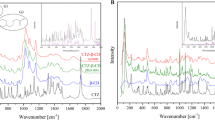Abstract
Studies have shown that cyclodextrins form both inclusion and non-inclusion complexes and that several different types of complexes can coexist in aqueous solutions. In addition, both cyclodextrins and cyclodextrin complexes are known to form aggregates and it is thought that these aggregates are able to solubilize drugs through micellar-type mechanism. Thus, stability constants determined from phase-solubility profiles are rarely true stability constants for of some specific drug/cyclodextrin complexes. A more precise method for evaluation of the solubilizing effects of cyclodextrins is to determine their complexation efficiency (CE). CE can be determined by measuring the solubility of a given drug at 2–3 cyclodextrin concentrations in pure water or a medium constituting the pharmaceutical formulation such as parenteral solution or aqueous eye drop formulation. Based on the CE value the drug:cyclodextrin ratio in the complexation medium can be determined as well as the increase in the formulation bulk in a solid dosage form. Determination of CE is a simple method for quick evaluating the solubilizing effects of different cyclodextrins and/or the effects of excipients on the solubilization. Here we report the CE of 43 different drugs with mainly 2-hydroxypropyl-β-cyclodextrin but also with randomly methylated β-cyclodextrin as well as few other cyclodextrins. Calculation of CE, drug:cyclodextrin molar ratio and the increase in the formulation bulk is discussed, as well as the influence of the intrinsic solubility and drug lipophilicity on the CE.


Similar content being viewed by others
References
Loftsson, T., Másson, M., Brewster, E.M.: Self-association of cyclodextrins and cyclodextrin complexes. J. Pharm. Sci. 93, 1091–1099 (2004).
Higuchi, T., Connors, A.K.: Phase-solubility techniques. Adv. Anal. Chem. Instrum. 4, 117–212 (1965).
Loftsson, T., Jarho, P., Másson, M., Järvinen, T.: Cyclodextrins in drug delivery. Expert Opin. Drug Deliv. 2, 335–351 (2005).
Magnusdottir, A., Másson, M., Loftsson, T.: Self association and cyclodextrin solubilization of NSAIDs. J. Incl. Phenom. Macroc. Chem. 44, 213–218 (2002).
Loftsson, T., Magnúsdóttir, A., Másson, M., Sigurjónsdóttir, J.F.: Self-association and cyclodextrin solubilization of drugs. J. Pharm. Sci. 91, 2307–2316 (2002).
Duan , M., Zhao, N., Össurardóttir, Í.B., Thorsteinsson, T., Loftsson, T.: Cyclodextrin solubilization of the antibacterial agents triclosan and triclocarban: formation of aggregates and higher-order complexes. Int. J. Pharm. 297, 213–222 (2005).
Loftsson, T., Brewster, E.M., Másson, M.: Role of cyclodextrins in improving oral drug delivery. Am. J. Drug Deliv. 2, 261–275 (2004).
Loftsson, T., Hreinsdóttir, D., Másson, M.: Evaluation of cyclodextrin solubilization of drugs. Int. J. Pharm. 302, 18–28 (2005).
Loftsson, T., Hreinsdóttir, D.: Determination of aqueous solubility by heating and equilibration: a technical note. AAPS PharmSciTech. 7(1), www.aapspharmscitech.org (2006).
Bonini, M., Rossi, S., Karlsson, G., Almgren, M., Lo Nostro, P., Baglioni, P.: Self-assembly of β-cyclodextrin in water. Part 1: Cryo-TEM and dynamic and static light scattering. Langmuir 22, 1478–1484 (2006).
Coleman, W.A., Nicolis, I., Keller, N., Dalbiez, P.J.: Aggregation of cyclodextrins: an explanation of the abnormal solubility of β-cyclodextrin. J. Incl. Phenom. Macroc. Chem. 13, 139–143 (1992).
Loftsson, T., Másson, M.: The effects of water-soluble polymers on cyclodextrins and cyclodextrin solubilization of drugs. J. Drug Del. Sci. Tech. 14, 35–43 (2004).
Yamakawa, T., Nishimura, S.: Liquid formulation of a novel non-fluorinated topical quinolone, T-3912, utilizing the synergic solubilizing effect of the combined use of magnesium ions and hydroxypropyl-β-cyclodextrin. J. Control. Rel. 86, 101–113 (2003).
Loftsson, T., Másson, M., Sigurjónsdóttir, J.F.: Methods to enhance the complexation efficiency of cyclodextrins. S.T.P. Pharma Sci. 9, 237–242 (1999).
Agbaria, A.R., Gill, D.: Extended 2,5-diphenyloxazole-gamma-cyclodextrin aggregates emitting 2,5 diphenyloxazole excimer fluorescence. J. Phys. Chem. 92, 1052–1055 (1988).
Suzuki, M., Tsutsui, M., Ohmori, H.: 2H NMR study of the self-assembly of an azo dye-cyclomaltooctanose (γ-cyclodextrin) complex. Carbohydr. Res. 264, 223–230 (1994).
Agnew, A.K., McCarley, D.T., Agbaria, A.R., Warner, M.I.: Phase transition pattern of 2,5-diphenyloxazole/g-cyclodextrin (PPO/g-CD) self-assembly aggregates. J. Photochem. Photobiol. A Chem. 91, 205–210 (1995).
Andronati, A.S., Shapiro, E.Y., Yakubovskaya, N.L., Gorbatyuk, Y.V., Andronati S.K., Krasnoschekaya, P.S.: Inclusion compounds of psychotropic agents and cyclodextrins. J. Incl. Phenom. Macroc. Chem. 24, 175–186 (1996).
Mele, A., Mendichi, R., Selva, A.: Non-covalent associations of cyclomaltooligosaccharides (cyclodextrins) with trans-β-carotene in water: evidence for the formation of large aggregates by light scattering and NMR spectroscopy. Carbohydr. Res. 310, 261–267 (1998).
Loftsson, T., Másson, M., Sigurdsson, H.H.: Cyclodextrins and drug permeability through semi-permeable cellophane membranes. Int. J. Pharm. 232, 35–43 (2002).
González-Gaitano, G., Rodríguez, P., Isasi, R.J., Fuentes, M., Tardajos, G., Sánchez, M.: The aggregation of cyclodextrins as studied by photon correlation spectroscopy. J. Incl. Phenom. Macrocycl. Chem. 44, 101–105 (2002).
Gabelica, V., Galic, N., De Pauw, E.: On the specificity of cyclodextrin complexes detected by electrospray mass spectrometry. J. Am. Soc. Mass Spectrom. 13, 946–953 (2002).
Correia, I., Bezzenine, N., Ronzani, N., Platzer, N., Beloeil, J.-C., Doan, B.-T.: Study of inclusion complexes of acridine with β- and (2,6-di-O-methyl)-β-cyclodextrin by use of solubility diagrams and NMR spectroscopy. J. Phys. Org. Chem. 15, 647–659 (2002).
Gabelica, V., Galic, N., Rosu, F., Houssier, C., De Pauw, E.: Influence of response factors on determining equilibrium association constants of non-covalent complexes by electrospray ionization mass spectrometry. J. Mass Spectrom. 38, 491–501 (2003).
Sau, S., Solanki, B., Orprecio, R., van Stam, J., Evans, H.C.: Higher-order cyclodextrin complexes: the naphthalene system. J. Incl. Phenom. Macroc. Chem. 48, 173–180 (2004).
Ventura, A.C., Giannone, I., Paolino, D., Pistarà, V., Corsaro, A., Puglisi, G.: Preparation of celecoxib-dimethyl-β-cyclodextrin inclusion complex: characterization and in vitro permeation study. Eur. J. Med. Chem. 40, 624–631 (2005).
Moffat, C.A., Osselton, D.M., Widdop, B. (eds.): 3rd ed. Clarke's Analysis of drugs and poisons. Vol. 2. Pharmaceutical Press, London (2004).
Peeters, J., Neeskens, P., Adriaensen, J., Brewster, M.: Alfaxalone: effect of temperature on complexation with 2-hydroxypropyl-β-cyclodextrin. J. Incl. Phenom. Macroc. Chem. 44, 75–77 (2002).
Acknowledgement
This work was supported by a grant from the University of Iceland Research Fund.
Author information
Authors and Affiliations
Corresponding author
Rights and permissions
About this article
Cite this article
Loftsson, T., Hreinsdóttir, D. & Másson, M. The complexation efficiency. J Incl Phenom Macrocycl Chem 57, 545–552 (2007). https://doi.org/10.1007/s10847-006-9247-2
Received:
Accepted:
Published:
Issue Date:
DOI: https://doi.org/10.1007/s10847-006-9247-2




